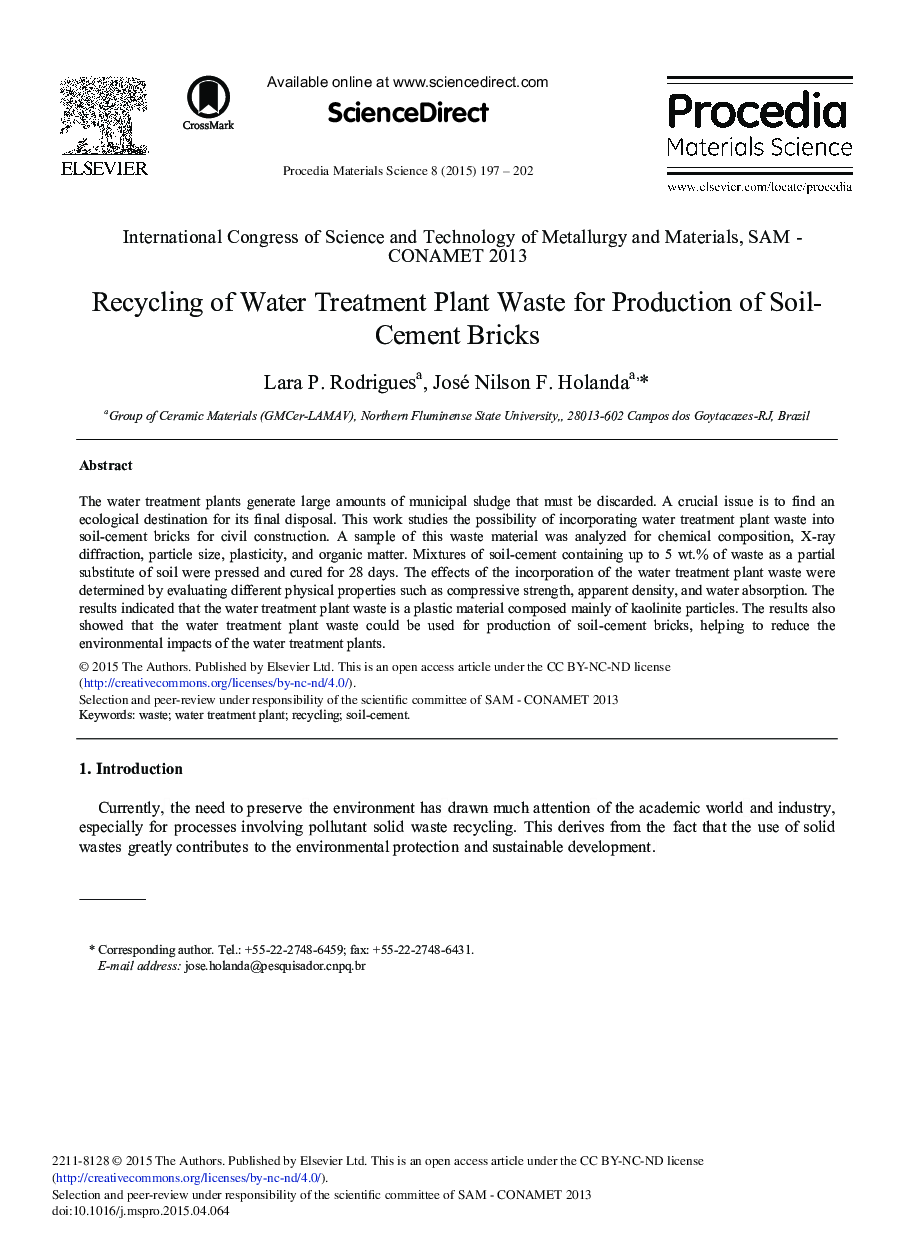| Article ID | Journal | Published Year | Pages | File Type |
|---|---|---|---|---|
| 1634136 | Procedia Materials Science | 2015 | 6 Pages |
The water treatment plants generate large amounts of municipal sludge that must be discarded. A crucial issue is to find an ecological destination for its final disposal. This work studies the possibility of incorporating water treatment plant waste into soil-cement bricks for civil construction. A sample of this waste material was analyzed for chemical composition, X-ray diffraction, particle size, plasticity, and organic matter. Mixtures of soil-cement containing up to 5 wt.% of waste as a partial substitute of soil were pressed and cured for 28 days. The effects of the incorporation of the water treatment plant waste were determined by evaluating different physical properties such as compressive strength, apparent density, and water absorption. The results indicated that the water treatment plant waste is a plastic material composed mainly of kaolinite particles. The results also showed that the water treatment plant waste could be used for production of soil-cement bricks, helping to reduce the environmental impacts of the water treatment plants.
